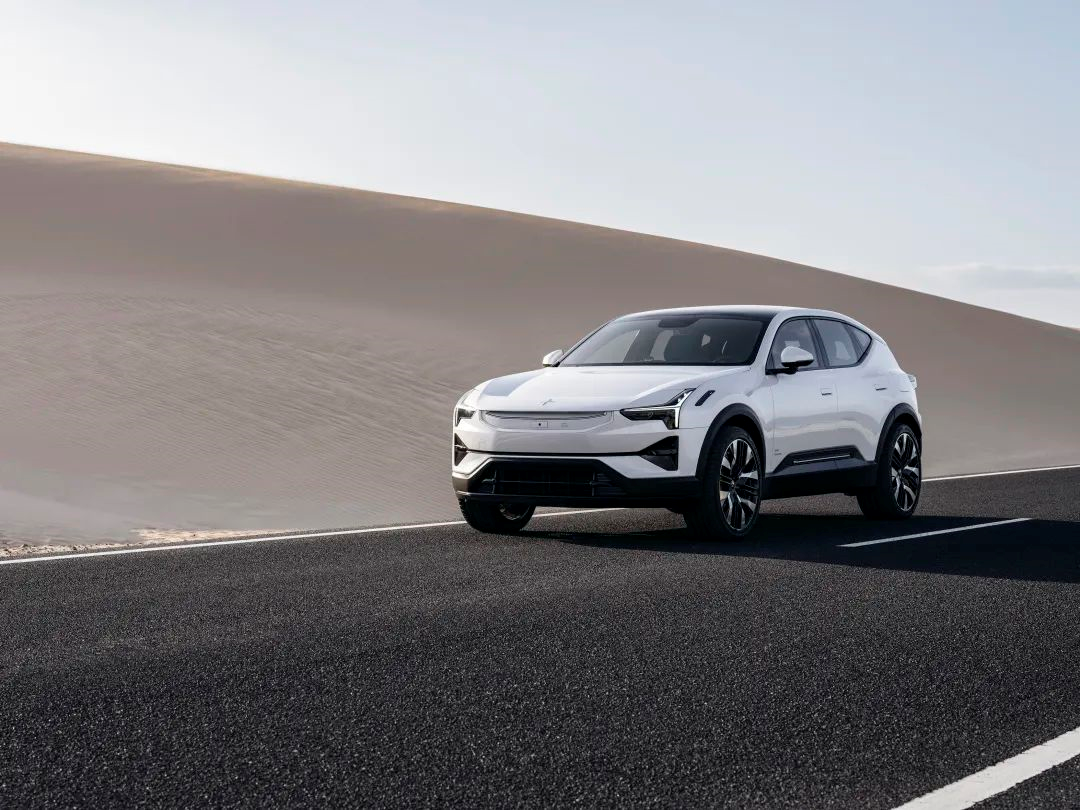Author: Michelin
“What comes to mind when you hear the term ‘ultra-luxury electric vehicles’? Is it the logo of a traditional luxury brand? The luxurious real leather interior? The avant-garde futuristic design? Or the ‘million-dollar level’ benchmark set at various automaker press conferences?
At one time, the distinct feature of the ‘ultra-luxury’ label has become blurred in the era of electric vehicles. The slogan of ‘technology equality’ seems to have eroded the social recognition accumulated by ultra-luxury brands, and even some people question: In the era of electric vehicles, does the value of luxury brands still exist? Is there still a market for ultra-luxury pure electric vehicles?
“This market is both a blue ocean and a red ocean,” said Feng Dan, CEO of Polestar China, in an interview on March 17 regarding the market for ultra-luxury pure electric vehicles. He said this because currently, in the 700,000 to 1 million yuan range, there are many electric vehicles, and the competition is fierce, but it seems that none of them can satisfy everyone’s imagination of ‘ultra-luxury’ electric vehicles.
This was Feng Dan’s first appearance after taking up the position of CEO of Polestar, and it coincided with the official release of the Polestar 3 in the Chinese market. With this release, there is now another highly competitive challenger in the ultra-luxury electric vehicle market. Can the Polestar 3 tell the story of ultra-luxury electric vehicles?

What is the brand value in the era of electric vehicles?
If you want to buy an electric car in the 200,000 to 500,000 yuan range at this stage, it is likely that you will trigger “decision paralysis” because there are too many options in the mainstream market. However, if you have a budget of over 600,000 yuan, the number of models you can choose from is quite limited.
Is it because no one wants to move up the brand ladder? Of course not. Unlike the pile configuration and internal rotation tactics of the mainstream market below 500,000 yuan, for the audience of the ultra-luxury market, product power is important, and brand value is even more important.
This kind of brand value is all about ‘the ultimate’. In the era of internal combustion engines, whether it is the familiar BBA or Porsche, they have established their own brand barriers through the exploration of power and mechanical extremes. In the era of electrification, when electric motors replace internal combustion engines, and touch screens replace mechanical buttons, luxury brands are like walking a tightrope between cutting-edge technology and traditional machinery. How to perfectly integrate the two is a quality that a luxury brand must have in the era of electrification.When it comes to integration, it seems that no brand is more suitable than Polestar. With the aura of SSTC racing champion, the brand’s positioning as an electric brand established since the launch of its first mass-produced car, Polestar integrates electrification technology, pioneering spirit, and driving experience, which are carved into Polestar’s DNA.
Polestar describes this as “Pure Luxury”: the ultimate integration of performance and comfortable driving experience, modernity and practicality, sustainable concepts and user experience, ultimately bringing an ultimate luxury product and service experience.
Polestar’s Heritage and New Story
If the racing spirit is the heritage inherited by Polestar from the Flash Engineering team and electrification is the “rebirth” of the brand, then how to interpret “performance” with electrification is the new story of Polestar, and it is also the mission of Polestar 3.
As a super luxury pure electric SUV, Polestar 3 faces competitors such as luxury pure electric SUVs like BMW iX and Mercedes-Benz EQS, as well as fuel SUVs like Porsche Cayenne, BMW X5L, and Mercedes-Benz GLE. The biggest difference is that Polestar 3 retains exceptional driving experience while being a pure electric car born for electrification.
Design, Polestar is always online
Three years ago, we saw Polestar’s understanding of the trend of future electric cars on the Polestar Precept concept car. We can see the realization of these design concepts on Polestar 3. Its design language does not inherit the design language of fuel brands, nor does it have a luxurious interior design. It is not as radical and exaggerated as those from the anime, but its lines are concise and powerful.
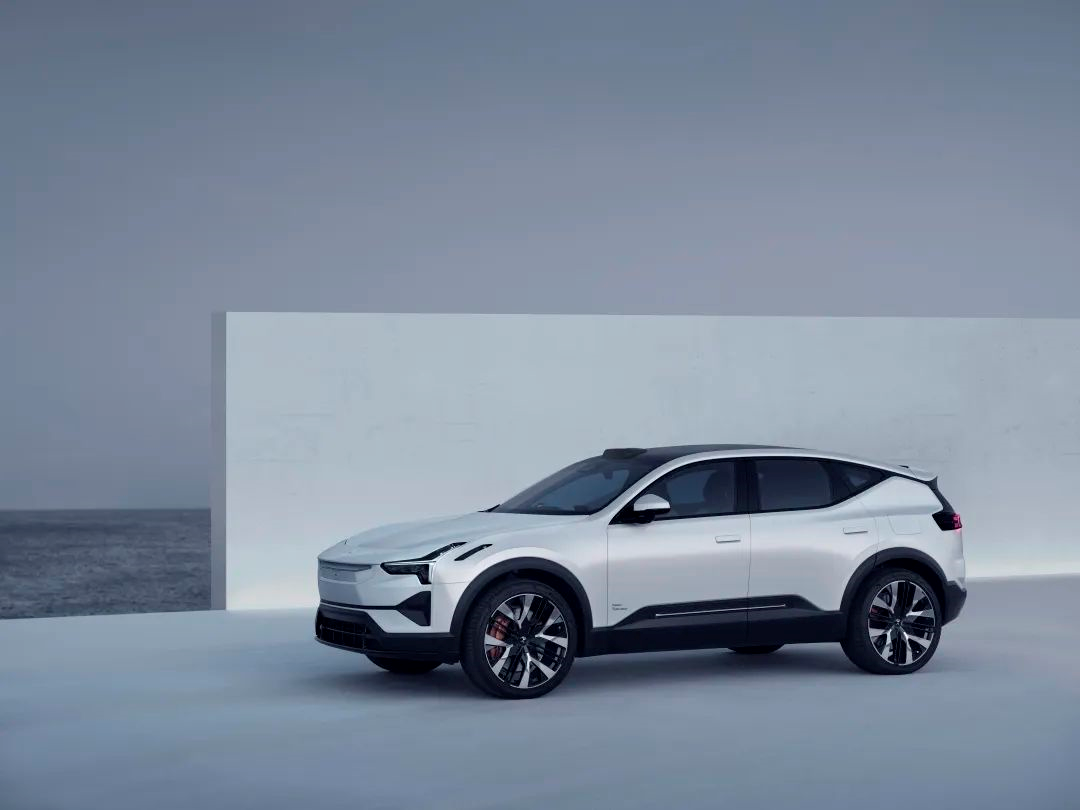
If beauty is in the eye of the beholder, one thing worth mentioning about the Geely 3 is that almost every extremely fine design has a value of its own, rather than just being designed for the sake of design.
Take the sensors of the driving assistance system as an example. Geely 3 considered the layout and position of these sensors in the initial design, eliminating the traditional air intake grille on the vehicle’s front and replacing it with a SmartZone intelligent sensing area. The SmartZone integrates cameras, millimeter-wave radar, and acceleration sensors, which work together to achieve more than ten auxiliary driving functions. The design of SmartZone not only maintains the overall integrity of the vehicle’s appearance, but also has a higher degree of integration. Its built-in electric heating wire can prevent the sensors from being covered by snow and ice in winter.
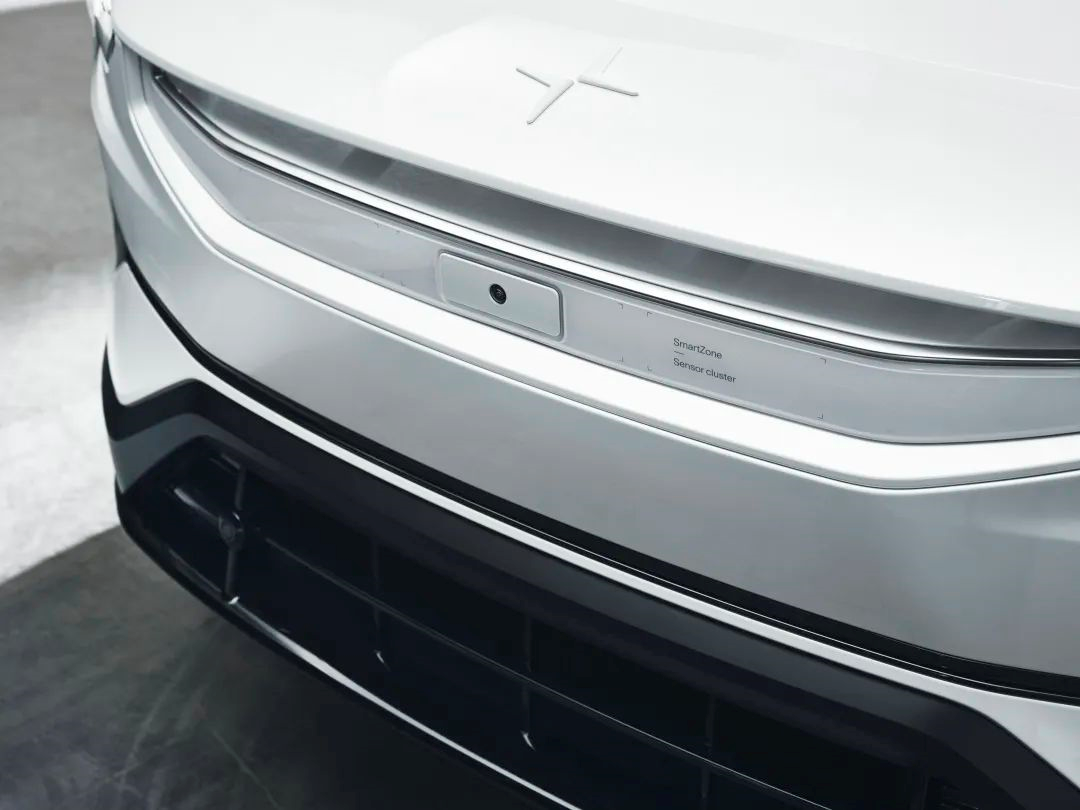
As one of the most important aspects of electric cars, the aerodynamics of the Geely 3 have been taken care of in every detail. From a whole perspective, the side windows of the Geely 3 are exceptionally flat, and the windows and B-pillars appear to be covered by a single piece of glass. The design of the flat side window glass not only makes the car body lines more concise, but also optimizes the aerodynamic performance of the vehicle’s side. The frameless rear-view mirror design reduces the vertical height of the rear-view mirror by 30%, reduces the occlusion of the field of view caused by the outer frame, and also reduces air resistance.

Other similar designs include the front and rear spoiler, hidden door handles, and more. These details make the vehicle’s surface smoother, and the airflow can flow more smoothly over the vehicle. While maintaining the overall appearance, a large SUV with a length of nearly 5 meters and a height of over 1.6 meters has a drag coefficient of only 0.29Cd, which requires both aerodynamics and design aesthetics to work together.### Pursuit of the Ultimate Performance, Polestar 3
Polestar 3 is equipped with a 111kWh battery pack provided by CATL, which has a range of 670km under CLTC test cycle and can be charged with a maximum power of 250kW under DC charging. It takes only 30 minutes to charge from 10% to 80%. In order to maintain the agile driving experience even with the heavy battery pack, the battery pack of Polestar 3 is divided into 17 modules. Most of the modules are composed of a large flat battery pack, which is placed under the car floor. The 17th module is located in the front of the car.
This design makes the center of gravity of the vehicle very low and will not take up the space of the trunk or passenger compartment. Accordingly, the seating posture of the seats and the height of the dashboard in the car have also been lowered. With the guarantee of the driver’s visibility, the SUV also has a sporty driving experience.

As a luxury high-performance SUV, Polestar 3 uses front and rear dual permanent magnet synchronous liquid-cooled motors, and the energy conversion efficiency is increased by 10%, which enables the maximum power of the dual-motor high-performance version to reach 380kW and the maximum torque to reach 910N·m. The acceleration from 0 to 100km/h takes only 4.7 seconds. If the battery and motor reduce the threshold of horsepower and acceleration, the vehicle’s ability to cope with complex road conditions and handling cannot be “instantaneous”.
Polestar 3 is equipped with TVDC dual-clutch torque vectoring control system as a standard feature, which can switch between two-wheel drive and four-wheel drive as needed (for long-range models), and can also monitor tire slip at any time, independently change the torque allocated to each rear wheel, and enable stable handling on wet and slippery roads. During cornering, the torque is allocated according to the steering situation to improve cornering performance. At the same time, Polestar 3 is also equipped with Polestar’s exclusive Swedish golden four-piston Brembo front brake caliper and 400mm ventilated integral front brake disc, with quick response and a stopping distance of only 34 meters from 100km/h.
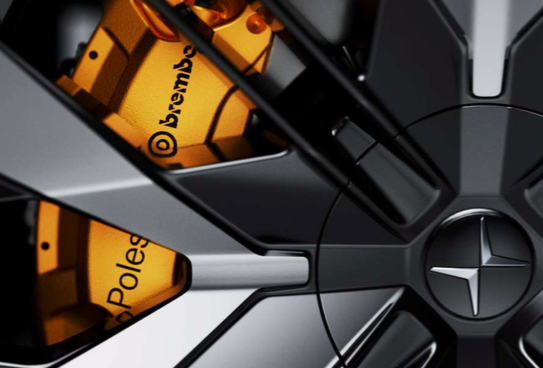 As a high-performance SUV, in order to cope with complex road conditions, it also comes standard with CDC continuously variable damping control shock absorbers and active double-cavity air suspension, which can adjust the suspension height according to different scenarios, automatically adjust the shock absorber parameters at a frequency of 500 times per second, and realize instant adjustment of soft and hard damping. When driving on different road surfaces, you can have a comfortable driving experience.
As a high-performance SUV, in order to cope with complex road conditions, it also comes standard with CDC continuously variable damping control shock absorbers and active double-cavity air suspension, which can adjust the suspension height according to different scenarios, automatically adjust the shock absorber parameters at a frequency of 500 times per second, and realize instant adjustment of soft and hard damping. When driving on different road surfaces, you can have a comfortable driving experience.
The Polestar 3 adopts a suspension combination specially designed for high-performance models, consisting of front double-wishbone independent suspension and rear integral multi-link suspension. The rear anti-torsion stiffness is higher. The vehicle can not only balance perfectly between the best grip and comfort, but also maintain the best body posture in high-speed corners, providing more driving pleasure.
Reinterpreting the brand connotation of ultra-luxury electric vehicles
If performance and electrification are the essence of an ultra-luxury pure electric SUV, then cutting-edge smart technology and sustainable environmental concepts are the soul of a smart electric vehicle. We have seen too many innovations for the sake of innovation in today’s smart electric vehicles, and even ignored the original meaning of innovation to provide a better experience. In the Polestar 3, we can see practical technological designs that meet the essential needs of users.
Technological Pioneer of Cabin Intelligence
The Polestar 3 cabin adopts a 3-screen design, with a 9-inch instrument panel and a 14.5-inch central control screen. The HUD projects information such as speed and navigation onto the windshield in front of the driver. In order to avoid visual pollution caused by multiple screens, the instrument panel has an anti-glare coating, which can avoid dazzling sunlight. The brightness of the HUD can also be automatically adjusted according to changes in external light to avoid visual fatigue during long-term driving.
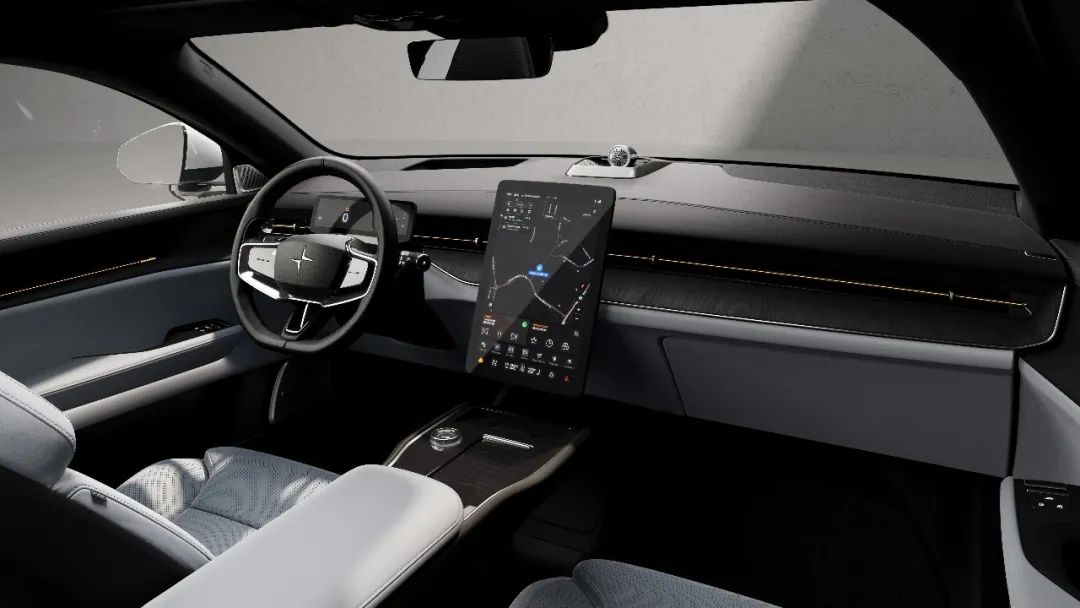
At the same time, the atmosphere lamp in the cabin also exercises “restraint”. Unlike other luxury brands that go all out on ambient lighting in the interior, they do subtraction, only designing 0.4 mm wide white LED ambient lighting embellishments on the instrument panel and door side, creating a quiet and comfortable night driving atmosphere.
In terms of software, the Polestar is equipped with the “Snapdragon Digital Chassis”. The high computing power of the Qualcomm Snapdragon 8155 chip ensures the smooth flow of important information among the three screens.The Polestar 3 adopts the native Android automotive operating system and has made local adaptations for the domestic market. Navigation, voice, and entertainment ecology – the “three major components of in-vehicle applications” – Polestar has chosen leading domestic solutions for all of them. For example, in terms of navigation, Polestar comes equipped with the Amap map, which has a domestic market share of more than one-third, ensuring the accuracy of navigation data and real-time information, and allowing many users to continue their navigation habits from their mobile phones on the in-car system. In terms of voice interaction, it has selected cooperation with iFlytek, which has a deep understanding of the speaking habits of Chinese users. For in-car entertainment, the Polestar 3’s system comes equipped with the Huawei AppGallery, with the strong backing of Huawei’s large software ecosystem, basically meeting the entertainment needs of users, such as music and video that are commonly used in the car.

In addition, Polestar 3 also comes standard with Bowers & Wilkins’ distinguished level of audio system, which is almost never seen in the same class of competitors. This system not only has the most iconic aluminum dual dome tweeter, known as the “Nautilus” speaker, on the windshield but also has a power output of 1,610 watts, with 25 speakers meticulously designed in various positions inside the car. This audio system can precisely control the precise “imaging” and “restoration” of sound.

An Eco-friendly safety cockpit environment second to none in the industry
Polestar 3 comes standard with a high-end dual-effective air purifier that can filter out 95% of small particles, 97% of viruses, and 99.9% of pollen and allergens in the car’s air through electrostatic adsorption and physical filtration methods. By combining with high-tech insulated panoramic sunroofs that can isolate 99.5% of ultraviolet radiation and front windshield glass with infrared coatings, the car’s interior can maintain cool and fresh air even in hot summers.
 For families with babies and sensitive individuals, concerns about car interiors extend beyond external air quality. Are there any odors in the new car? Will the seats’ materials make people uncomfortable and affect their health? More and more people are paying attention to these details, especially the consumers of a luxury SUV, whose focus on family and details far exceeds other consumer levels.
For families with babies and sensitive individuals, concerns about car interiors extend beyond external air quality. Are there any odors in the new car? Will the seats’ materials make people uncomfortable and affect their health? More and more people are paying attention to these details, especially the consumers of a luxury SUV, whose focus on family and details far exceeds other consumer levels.
In this regard, as an environmental pioneer, Polestar uses sustainable and environmentally friendly materials for all materials in the cockpit, without chromium or plasticizers. For example, replacing leather on interior surfaces such as the central armrest and center console with recyclable materials eliminates pollution caused by leather tanning processes. Recyclable PET materials and 100% recyclable fishing nets are used to replace textiles and carpets in the car, while natural fiber propylene materials are used to manufacture load-bearing frames for doors and trunks, which reduce the proportion of plasticizers in the cabin from 45% to 1%.
The use of these environmentally friendly materials not only reduces the carbon emissions generated by the lifecycle of the Polestar 3, but also makes the car’s interior environment healthier and more reassuring.
Well-known active and passive safety systems
Interactive design based on user needs and environmentally friendly materials ensure safety and health in the cabin, while the safety of vehicle operation is left to more intelligent advanced driving assistance systems. Nowadays, more and more brands regard intelligent driving as the “flagship” gimmick, but for users, safety and efficiency are the most basic and eternal requirements for intelligent driving.
There are a total of 12 ultrasonic sensors, 5 millimeter-wave radar sensors, 5 cameras (4 surround-view cameras and 1 front-facing camera with 8 million pixels and a 120-degree wide-angle view) and 2 driver monitoring sensors (inside the car) are configured on the Polestar 3. The data from these sensors will provide strong support for road warnings and driving assistance, providing more than ten driving assistance functions and active safety protection for users from car start-up to continuous scenes on highways.## Overview
The PA Navigation Assistance function in the Polestar 3 can use steering assistance to help drivers keep their vehicle between the lane markers and maintain distance from other vehicles at speeds between 0 and 130 kilometers per hour. In the future, Polestar 3 will offer an optional driver assistance package consisting of Luminar’s LiDAR, Nvidia’s Drive Orin chipset, and three cameras, providing real-time detection of the vehicle’s surrounding long-range environment.
In addition to active safety protection provided by the driving assistance, to ensure maximum safety in the event of an accident, the sturdy cage-style body structure of the Polestar 3 uses blended materials in the front and rear buffer zones to absorb energy and reduce the impact of collisions. The vehicle is also equipped with nine safety airbags, including conventional driver and passenger airbags and curtain airbags, with dual inner side airbags between the driver and passenger, forming a barrier to prevent secondary injuries after a collision.
Luxury brands have often been seen as lacking in intelligence, Polestar 3 provides innovative intelligent features that exist not to show off, but to silently provide users with safe protection and convenience in use.
Conclusion
From the release of the first pure electric car, Polestar 1, in 2017, to the recent official launch of Polestar 3 in China, Polestar’s insistence and perseverance can be seen in its pursuit of driving. For the pursuit of pioneering technology and design and the determination to be a luxury brand, Polestar’s persistence never changes.
At the same time, we can also see that Polestar is making positive adjustments. Facing China, the most active and potentially fastest growing new energy market, the Polestar team actively listens to feedback from the Chinese market, uses a globally unified pricing strategy as the basis, and finally lists Polestar 3 with a dual-motor long-life version for 698,000 yuan and dual-motor high-performance version for 798,000 yuan.
With the launch of the Polestar 3 in China, Polestar will also empower its software development team in China. Facing the core market of this global strategy, the Polestar 3 has developed a pricing system and more competitive product features closely tailored to the Chinese market, as well as exceeding expectations in service experience.
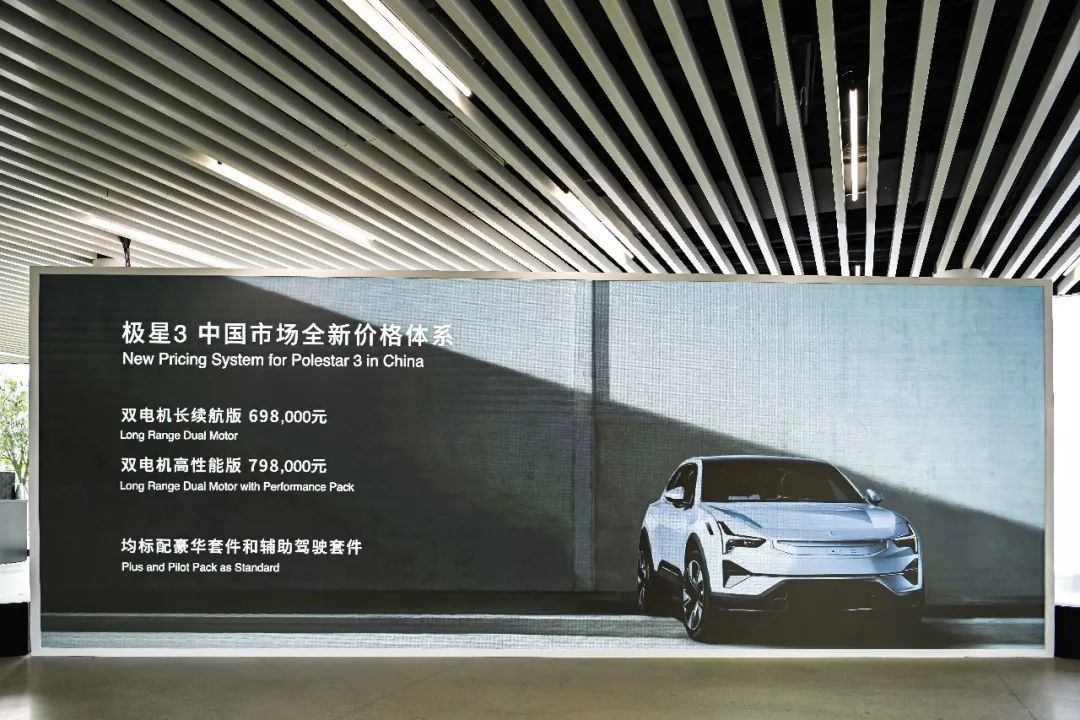 “2023 will be Polestar’s ‘Year One’ in China,” as Feng Dandian put it. Perhaps, as he said, the story of Polestar’s presence in the Chinese market is just beginning with the launch of the Polestar 3.
“2023 will be Polestar’s ‘Year One’ in China,” as Feng Dandian put it. Perhaps, as he said, the story of Polestar’s presence in the Chinese market is just beginning with the launch of the Polestar 3.
This article is a translation by ChatGPT of a Chinese report from 42HOW. If you have any questions about it, please email bd@42how.com.
